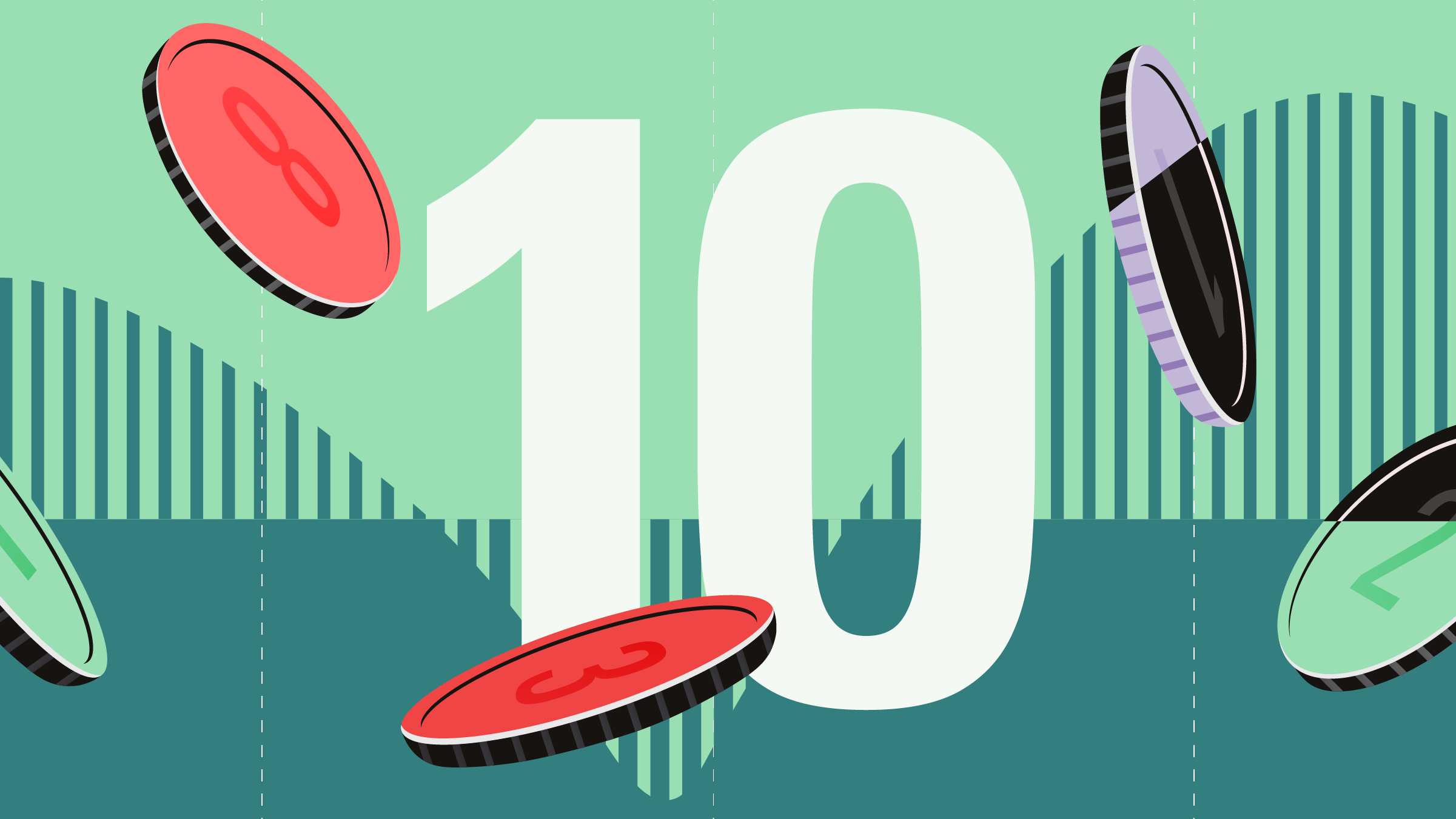Tesla’s last stock split was a 5-1 split in August 2020, where investors received an additional four shares for each one that they owned.
The announcement follows a raft of stock split announcements. Earlier this month, Amazon.com (AMZN) announced plans for its fourth stock split since 1998. The upcoming 20-1 stock split is set to take effect on June 6, meaning that for each share of Amazon you own, you would get an additional 19 shares.
Moreover, Alphabet (GOOGL), the parent company of Google, announced plans for a 20-1 stock split in February. Back in July 2021, Nvidia (NVDA) had a 4-1 split. And, Apple (AAPL) split its stocks in 2020.
How Does it Work?
Simply put, a stock split is exactly what it sounds like. One share gets divided, or split, into multiple shares. Don’t worry, though. The value of your holdings is the same, just in smaller chunks.
Think about it like a dark chocolate bar. Your one big dark chocolate bar is broken down into multiple bite-size pieces. You still have the same amount of chocolate, just in smaller segments.
Similarly, in a stock split, it is very important to remember that the price of the share also is reduced. For example, if a company board announces a 2-for-1 split, then you get one extra share for each share you own - but the share price will be halved. In this example of a 2-for-1 split, if you had one share of Company X at $10 per share, you now have two shares of Company X at $5 per share.
This does not mean that the stock has become cheaper. The fundamentals of the company and the stock price have not changed. Sticking with the dark chocolate bar analogy, after breaking the bar into smaller bits, you have smaller bits of dark chocolate, not more chocolate overall.
But Why?
Why do companies announce stock splits? Stock splits are a way for companies to increase their overall liquidity.
Liquidity means the ease with which investors can buy or sell shares on a stock exchange. The smaller the dollar amount of each share, the smaller number of shares are needed by even the smallest investor to buy or sell that stock.
In most cases, stock splits are undertaken by companies when the share price has gone up significantly, particularly in relation to a company’s stock market peers. If the share price becomes more affordable for smaller investors, it can reasonably be assumed that more investors will participate, and so the overall liquidity of the stock would increase as well.
But remember this with stock splits: Though the number of outstanding shares changes, and though the price of each share changes, the company's overall market capitalization stays the same. The value of the company doesn’t increase when a split occurs, therefore the value of your stocks, your shares, doesn’t change, either.
Take Alphabet for example. It closed Tuesday, February 1, at $2,572.88. Many investors (myself included) would not be able to invest in Alphabet, because I do not have $2500-odd to invest in one share of one company. Now if the stock split were to happen as of Tuesday’s close, the cost of each share would go from $2,572.88 to $128.64, and each existing holder would get 19 additional shares for every share they own. A stock price of $128-odd would be much more manageable, both for me and for many others.
This is especially true now with more and more investors having access to low-cost trading platforms. Buying and selling stocks is now easier than ever, and for many investors these recent splits might be an entry point into companies they have long admired.
All this being said, these recent high-profile splits seem superfluous given that most brokerage platforms now enable trading in fractional shares. Perhaps the psychology of owning at least one whole share is at play in the companies’ decisions.
“When we look at a company like Apple and strictly observe the value of an investment immediately after a stock split, there really isn’t a discernable pattern in the change in wealth. What is noticeable is the trading volume of the stock which might be attributed to news flow,” says Morningstar Canada’s director of Investment Research Ian Tam. “All this said, for long-term investors in a stock, a stock split (or reverse split) really doesn’t affect the fundamental value of the company or the wealth in your pocket.”
Does the Company Change?
Not at all. Stock splits do not alter the fundamentals of the company in any way, apart from the short-term price increases we described earlier. There’s no harm done in this regard if the stock doesn’t split either.
The Upside Down
The opposite of a stock split is a reverse stock split.
In the case of reverse stock splits, the company divides the number of shares that investors own, rather than multiplying them. As a result, the price of the shares increases.
For instance, if you own 10 shares of Company X at $10 per share, and the company announces a 1-for-2 reverse stock split, you end up owning five shares of Company X at $20 per share. Usually, reverse stock splits are announced by companies that have low share prices and want to increase them--oftentimes to avoid being delisted.
You may think that reverse stock splits are bad news for the company, but this is not always the case. One of the most famous examples of reverse stock splits is Citigroup (C). Its share price declined to under $10 during the 2008 global financial crisis and stayed there, so in 2011 the Citigroup board decided to do a reverse split of 1-for-10. The split took the price from $4.50 per share to $45 per share. The company – and the stock – survived and is now trading at around $55 per share (as of March 9).
See, just maths!
Editor’s note: the following is a version of an article originally published in February 2022
 What is a Stock Split?
What is a Stock Split?
 Apple and Tesla After Their Stock Splits
Apple and Tesla After Their Stock Splits
 ASML Stock Slumps on Weaker Guidance, Lower Orders
ASML Stock Slumps on Weaker Guidance, Lower Orders
.jpg) Are European Stocks Vulnerable to an Nvidia-Led AI Rout?
Are European Stocks Vulnerable to an Nvidia-Led AI Rout?
 Are FTSE Mining Companies Cheap Right Now?
Are FTSE Mining Companies Cheap Right Now?
 Advice for George Osborne and Stock Market Regrets
Advice for George Osborne and Stock Market Regrets
 How to Find Solid Dividend-Paying Stocks
How to Find Solid Dividend-Paying Stocks
 10 Top-Performing Funds in the UK
10 Top-Performing Funds in the UK
 Fund Research: Europe’s Shining Stars
Fund Research: Europe’s Shining Stars
 ‘Has DeepSeek Changed the Game for European Stocks? Probably Not’
‘Has DeepSeek Changed the Game for European Stocks? Probably Not’
 Is The Finsbury Growth and Income Trust a Top Pick for Dividend Seekers?
Is The Finsbury Growth and Income Trust a Top Pick for Dividend Seekers?
 10 Best US Dividend Aristocrats to Buy Now
10 Best US Dividend Aristocrats to Buy Now
 Apple Earnings: iPhone Slowdown is Playing Out
Apple Earnings: iPhone Slowdown is Playing Out
 Palantir: A Strong Position in the AI Value Chain Warrants Enthusiasm
Palantir: A Strong Position in the AI Value Chain Warrants Enthusiasm
















